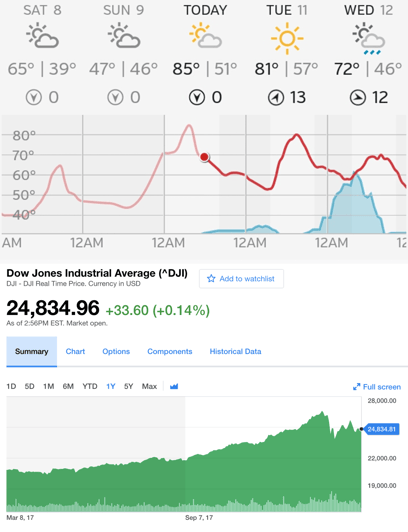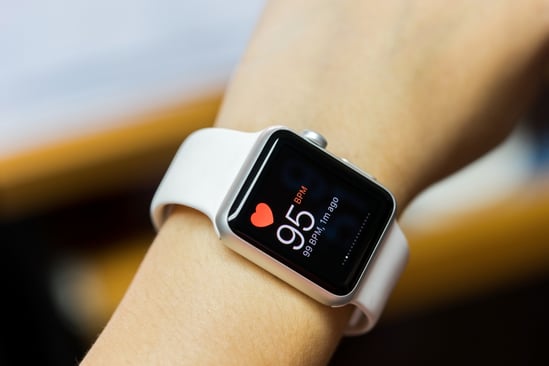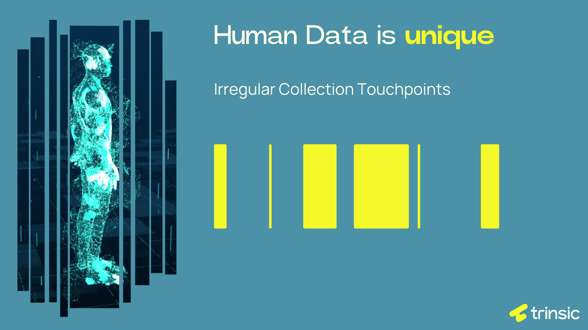What You'll Learn
- Discover the essence of time-series data and its burgeoning prevalence.
- Explore examples of both standard and human-centric sources of this dynamic data.
- Delve into the understanding of vital considerations for storing and analyzing time-series data.
Take me to the summary
Time-series data, a record of observations meticulously gathered over time, offers profound insight into human health, performance, and readiness dynamics.
What is Time-Series Data?
Time-series data is a unique category where observations are systematically collected, recorded, or measured over time.
It is a sequence of data points meticulously ordered by time. The analysis of time-series data is a powerful tool for deciphering patterns, trends, and behaviors over time. Notably, this data is always organized chronologically, creating a continuum of information.
To envision it, picture plotting these data points on a graph, where one axis invariably represents time, associating each data point with a specific timestamp. The below are examples of time-series data visualizations related to weather and stock prices.

This data collection has far-reaching applications for human data, especially in the era of wearables and continuous monitoring systems.
Human-Centric Time-Series Data
Heart Rate Monitoring
- Continuous heart rate measurements are recorded at regular intervals (e.g., every minute).
- Monitoring changes in heart rate over time to identify patterns related to exercise, stress, sleep, or potential health issues.

Blood Glucose Monitoring
- Regular measurements of blood glucose levels throughout the day.
- Monitoring blood sugar trends over time to manage diabetes, assess the effectiveness of dietary changes, and make informed decisions.
Cognitive Performance Assessment
- Periodic assessments of cognitive functions, such as reaction time, memory, and attention span.
- Analyzing changes in cognitive performance over time to identify patterns related to factors like stress, sleep quality, or the impact of cognitive training.
From this data, many basic calculations are made, resulting in more straightforward, more interpretable metrics such as average daily glucose level or resting heart rate (RHR). The time-series data is used to generate these more familiar metrics.
Is Time-Series Data New?
No. However, time series data has historically often been discarded or not extensively utilized.
Special capabilities and considerations for storing and analyzing time-series data have advanced in recent years. Sensor and data capture technology has rapidly improved to generate more data than ever and, in turn, create more high-frequency time-series data. Time-series data is dynamic and more abundant than ever before.
Storage - Early computational constraints and limited storage capacities hindered the utilization of time series data, making it impractical for many applications.
Experience & Expertise - Lack of awareness about the potential value of time series data and the absence of specialized tools contributed to a historical tendency to overlook the rich insights that temporal (related to time or the sequence of events) data could provide.
Analytics - Traditional statistical methods and tools were not well-equipped to handle the computational complexity and noise of time series data, leading to its underutilization.
Researchers and practitioners are starting to recognize the importance of temporal information in real-world human data, leading to a better understanding of the insights that can be derived from such data.
The need for efficient time-series data storage and analysis grows with the increasing instrumentation of the world. Purpose-built data platforms designed to handle its scale enable effective data lifecycle management, summarization, and large-scale scans.
Retaining and analyzing time-series data provides a comprehensive and dynamic view, allowing for detecting patterns, trends, and changes over time. It enables a more nuanced understanding of individual and team well-being and performance.
A Few Unique Time-Series Data Considerations
Data Quality & Missing Values:
Assessing and managing data quality issues, including missing values or outliers, is vital in time-series data. The accuracy of analyses and predictions can be significantly affected by incomplete or erroneous data.
Linear vs. Nonlinear Time-Series Data
Distinguishing between linear and nonlinear time-series data is essential for understanding their characteristics within diverse datasets. Linear data follows predictable patterns, while nonlinear data, driven by dynamic equations, showcases unique features.

Frequency & Periodicity
Data sources like wearables exhibit regularity, while irregular events like logs or clinical assessments occur sporadically. The sampling frequency of human data, hourly, daily, or monthly, influences the ability to capture short-term or long-term patterns. Seasonality, observed in some time-series data with repeating patterns at regular intervals, demands recognition and adjustment for accurate analysis.
High Volume & Granularity:
Time-series data often involves a high volume of data points, especially when observations are recorded frequently. The granularity, or the frequency of data collection, varies from milliseconds to days. Because of the complexities of human physiology and behavior and continuous innovation in AI/ML, it is critical to store human data at its finest granularity in order to preserve information integrity and extend the lifecycle of data. Efficient storage solutions for time-series data must handle this substantial volume effectively. Moreover, they should provide mechanisms for storing and retrieving data at different granularities.
Archival & Reprocessing
Archival and reprocessing considerations involve the long-term storage and reanalysis of time-series data. As data accumulates, strategies for efficient archival become crucial for maintaining accessibility and usability over time. The ability to reprocess stored data is essential for applying advancements in algorithms or calculation methods retrospectively, ensuring compatibility with evolving technology and accommodating changes in analytical approaches.
Harnessing the Essence of Time
Wearables and sensors capture raw time-series data, which undergoes transformations into interpretable metrics. Still, each layer contributes unique insights into human behavior. Complete data collection ensures that time-series data is captured and stored, preventing valuable information from being overlooked. Recognizing special considerations such as data quality, frequency, seasonality, and volume, the retention and analysis of time-series data requires a purposeful approach to unveil comprehensive insights into individual and team well-being and performance.
Take-Home
- Time-series data is a unique category of systematically collected, recorded, or measured observations ordered by time, providing a powerful tool to decipher patterns, trends, and behaviors over time.
- Common examples include heart rate monitoring, blood glucose monitoring, cognitive performance assessments, weather, and stock prices.
- Analyzing and storing time series data requires special attention to managing data quality, discerning linear and nonlinear patterns, grasping frequency intricacies, tackling high-volume challenges, and planning for archival and reprocessing needs.